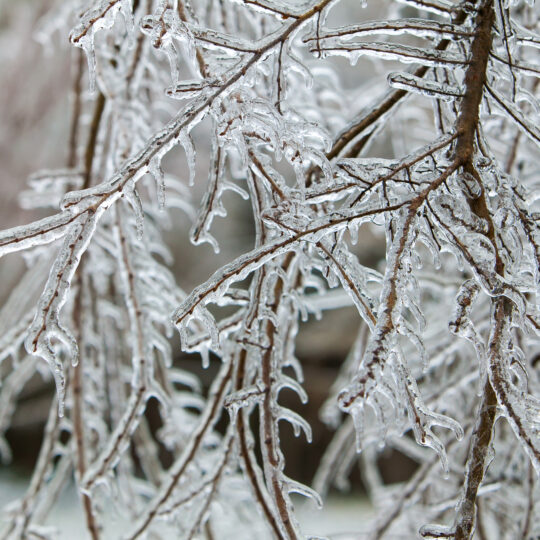Should You Protect Your Tree from Ice?
Risk Factors to Consider & Preventative Methods to Try
Posted
December 26, 2024

An icy snow-covered tree can be a beautiful sight, but it can also be a dangerous one. Learn what to watch for and which ice protection methods can help your tree stay safe and beautiful throughout the season.
Winter Weather Risk Factors for Trees
If you live in an area surrounded by woods or native trees, these species should be accustomed to the environment and strong enough to survive harsh winter weather. However, certain types of trees are more susceptible to snow and ice damage than others. Here are some factors to consider before the next storm.
- Type. Fruit and flowering trees may already have buds forming, so any breakage could mean less blooms next year. Also, if you’ve noticed your tree sagging after previous storms, this may be the time to give it more support.
- Age. Young trees are more fragile with thin, breakable branches. If you’ve just planted or transplanted a tree in the fall, it will need more protection.
- Condition. If your tree has recently been treated for pests, disease, or structural issues, it could be weaker and less likely to handle heavy snow and ice.
- Forecast. If they’re calling for heavy snow and ice, consider whether the branches can take the added weight.
If you’re worried about your tree making it through the winter, there are ways to help protect it no matter its type, age, or condition.
Ice Protection for Trees
Winter weather can be harsh on many living things. Since trees don’t have the ability to find shelter from harsh storms, you can help it weather the winter with a few important tree care options.
- Pruning. Late winter is the best time for reshaping trees so they grow back stronger in the spring. But it’s always a good time to remove any weak, diseased, or dead branches that could easily break in the wind or under the pressure of snow and ice.
- Wrapping. Young trees and species with thinner branches could benefit from being wrapped in burlap to prevent snow and ice damage.
- Bracing. Install cables to help distribute weight throughout larger trees that need extra support.
If you’re still not sure how to protect your specific tree this winter, contact a professional arborist to help assess the potential risk factors in your own yard. Call Elite Tree Care at 610-935-2279 for a consultation to determine if your tree would benefit from extra protection before the next winter storm.

Download Your FREE Tree Planting Guide
Planting a tree is a cinch, as long as you are properly prepared. Get prepped to plant one tree or 100 with our straightforward guide.